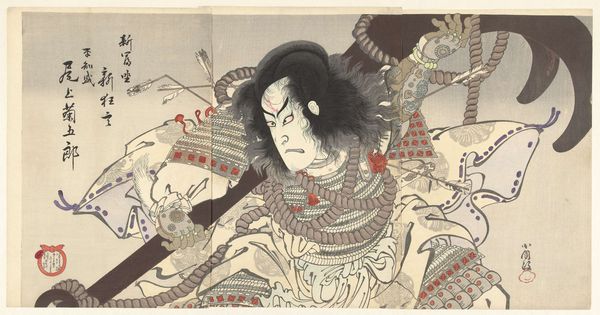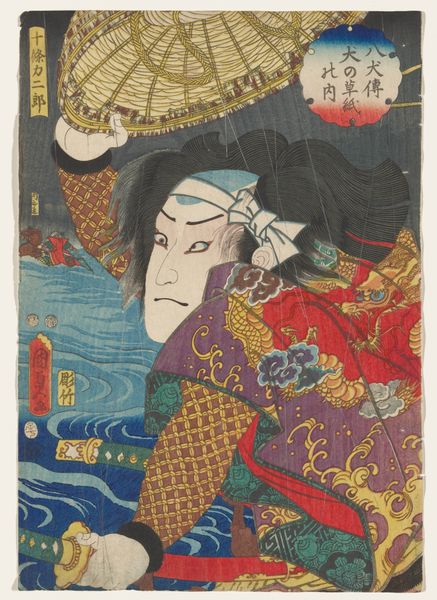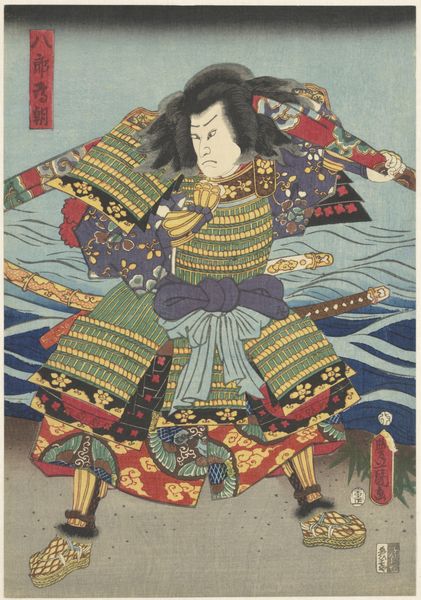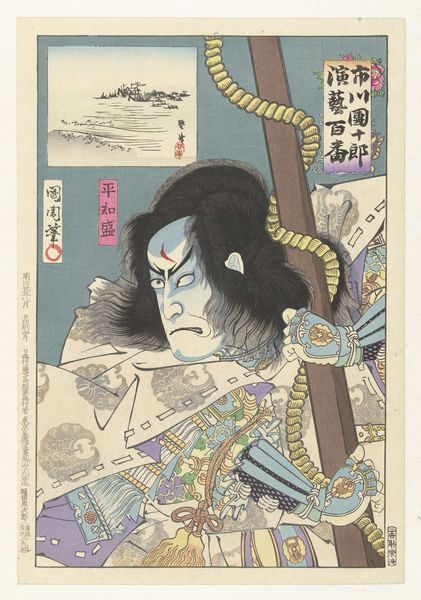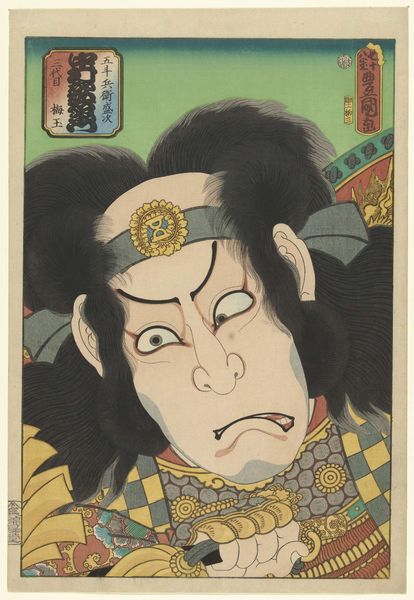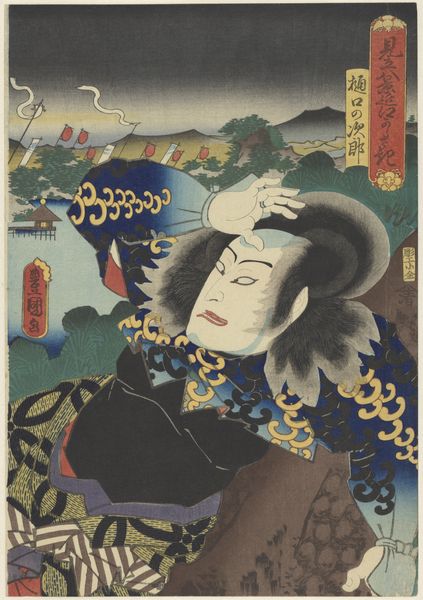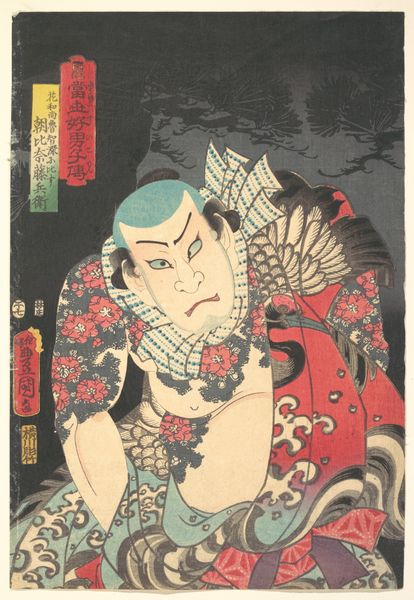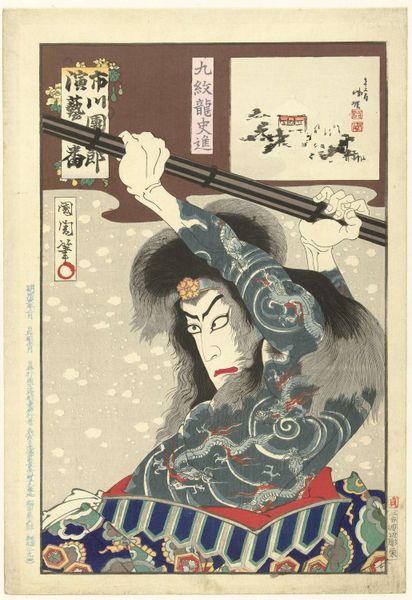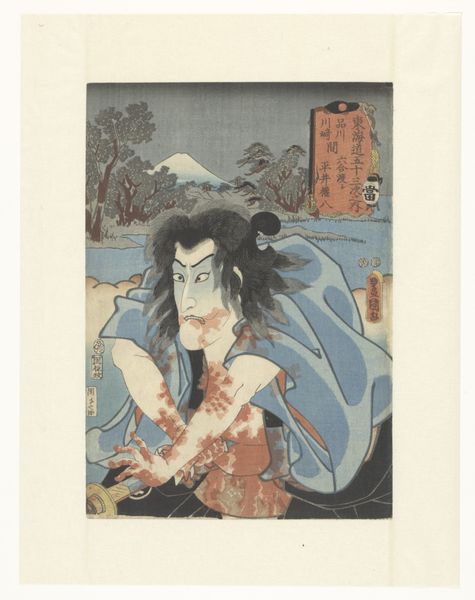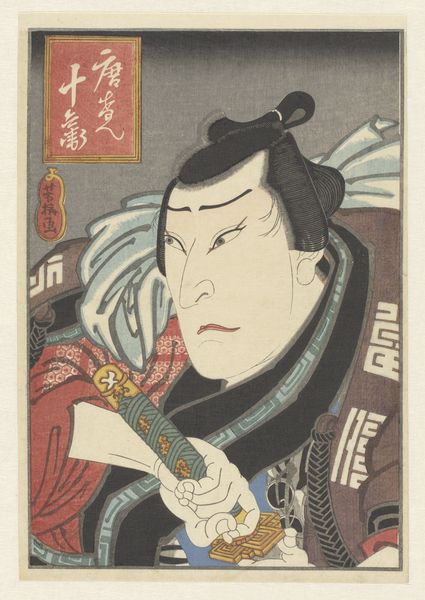
Actor Ichikawa Danjūrō VIII as Naofuku Maki Takarago Possibly 1852 - 1858
0:00
0:00
print, ink
#
portrait
# print
#
asian-art
#
ukiyo-e
#
figuration
#
ink
Dimensions: 14 3/8 × 9 5/8 in. (36.5 × 24.5 cm) (image, sheet, vertical ōban)
Copyright: Public Domain
Editor: Here we have "Actor Ichikawa Danjūrō VIII as Naofuku Maki Takarago," a Japanese woodblock print by Utagawa Kunisada, likely from the 1850s. The actor’s exaggerated makeup and dramatic pose strike me immediately. How do you interpret this work, particularly regarding its physical creation and its place in society? Curator: For me, this print is deeply rooted in its means of production. Look at the materiality of the woodblock technique, how the artist, carver, and printer collaborated. It speaks volumes about the Edo period's urban culture and its consumerism. Consider the labor involved and how such prints were circulated widely. Ukiyo-e, or "pictures of the floating world," became commodities accessible to the commoner, reflecting and shaping their desires and entertainment. The very accessibility challenges the notion of art as exclusively "high" culture, wouldn’t you say? Editor: That's fascinating. So the material and the method democratized art in a way? Curator: Precisely. The repetitive nature of printmaking, its inherent reproducibility, speaks to an early form of mass media. And the subject matter itself, a popular Kabuki actor, elevates performance and entertainment, blurring boundaries between art, craft, and commerce. Who gets to decide what "art" is, if a mass-produced woodblock of an actor achieves such recognition? Think about the economic support the woodblock industry provided artisans, too. The means of production influenced what subjects were most frequently seen. Editor: It makes you wonder about our own mass media and what that’s elevating in a similar way today. The technology shapes the culture. Curator: Indeed. Analyzing this print through a material lens makes us consider the tangible elements that contribute to its creation and reception. That approach allows us to appreciate it beyond its aesthetic qualities. Editor: I see how focusing on the materials and processes used to create the art really opens it up. I hadn't considered that side of things so much before. Thanks!
